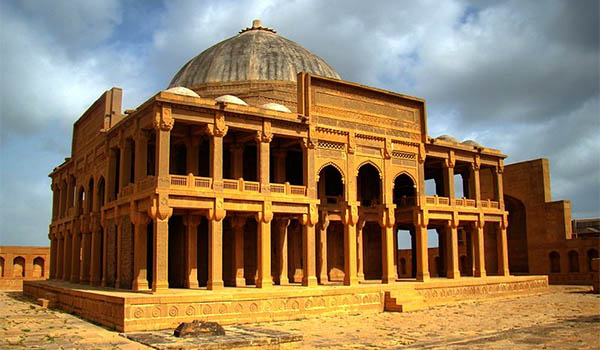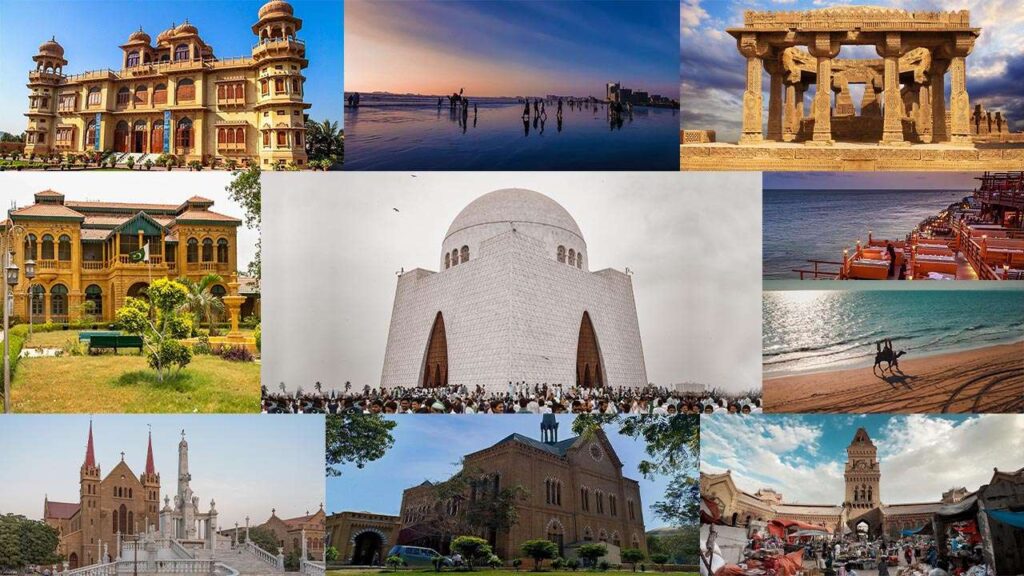Top Tourist Attractions in Sindh You Must Visit
Sindh, one of the four provinces of Pakistan, is a land steeped in history, culture, and mysticism. From the bustling metropolis of Karachi to the serene deserts of Thar, Sindh is dotted with breathtaking landscapes, historical marvels, and spiritual centers. Whether you’re a history enthusiast, nature lover, or spiritual seeker, Sindh offers an unforgettable experience. Here’s a comprehensive guide to the top tourist attractions in Sindh you must visit.
Mohatta Palace – Karachi
Nestled in the heart of Karachi, the Mohatta Palace is a striking example of Indo-Saracenic architecture. Built in 1927 by Shivratan Chandraratan Mohatta, a successful Hindu businessman, this palace originally served as a summer home. After the partition, it was repurposed for various official uses and now operates as a museum.
The palace showcases elegant domes, intricate carvings, and jharokas (overhanging enclosed balconies) that reflect the cultural fusion of Mughal and Rajasthani styles. Inside, it houses a rich collection of Sindh’s art, culture, and history, including calligraphy, sculptures, traditional crafts, and historical documents. The serene garden around the palace is an ideal spot for leisurely walks and photography.

Makli Necropolis – Thatta
A UNESCO World Heritage Site, the Makli Necropolis is one of the largest and oldest graveyards in the world, spreading over 10 square kilometers. It holds the remains of more than half a million people, including kings, queens, saints, scholars, and philosophers.
Dating back to the 14th century, Makli’s tombs display a fusion of Islamic, Persian, Hindu, and Gujarati architecture. The elaborately decorated stone carvings, delicate calligraphy, and grand domes tell stories of a time when Thatta was a major center of culture and learning. A walk through Makli is like a journey back in time—a must-visit for history buffs and architecture enthusiasts.
Shah Jahan Mosque – Thatta
Located just a few kilometers from Makli, the Shah Jahan Mosque is another architectural gem of Thatta. Commissioned by the Mughal Emperor Shah Jahan in 1647, it is widely regarded as one of the finest examples of Mughal architecture in Pakistan.
What sets this mosque apart is its breathtaking tile work, made using blue and white faience tiles. The mosque has 93 domes and no minarets—a unique feature. The acoustic design is so precise that a whisper from one end of the dome can be heard clearly at the opposite end. It remains a place of worship and a source of pride for the people of Sindh.
Ranikot Fort – Jamshoro
Also known as The Great Wall of Sindh, Ranikot Fort is believed to be the largest fort in the world, encompassing approximately 32 kilometers in circumference. Though its origins are unclear, it is thought to have been constructed during the Talpur dynasty in the 17th century.
Surrounded by arid hills and desolate plains, Ranikot offers a spectacular view of the rugged Sindh landscape. Within the main walls lie smaller forts like Meeri and Shergarh, adding to the mystique of the complex. It’s a popular destination for hiking, historical exploration, and camping under the stars.
Keenjhar Lake (Keenjhar Jheel) – Thatta
Keenjhar Lake, also known as Keenjhar Jheel, is the second-largest freshwater lake in Pakistan and a vital source of drinking water for Karachi. Located about 122 kilometers from Karachi, it is a favored picnic spot for families and nature lovers.
The lake is steeped in folklore—legend has it that Noori Jam Tamachi, a fisherwoman, won the heart of a prince and was buried in the lake. Her tomb is a pilgrimage site for many Sindhi locals. Keenjhar is also a haven for birdwatchers, especially during winter when migratory birds flock to the area.
Lal Shahbaz Qalandar Shrine – Sehwan Sharif
A spiritual and cultural landmark, the Shrine of Lal Shahbaz Qalandar in Sehwan Sharif attracts millions of devotees every year. Lal Shahbaz Qalandar, a 13th-century Sufi saint and poet, is revered for his teachings of love, tolerance, and humanity.
The shrine is famous for its intense spiritual ambiance, devotional music (Qawwali), and especially the Dhamaal, a form of devotional dance that symbolizes unity with the divine. The annual Urs (death anniversary) of the saint draws pilgrims from across the country and even abroad, making Sehwan a spiritual epicenter in Sindh.
Faiz Mahal – Khairpur
Built in 1798, Faiz Mahal is a striking architectural wonder located in Khairpur, once the seat of the Talpur Mirs. This palace served as a court and residence for the royal family and reflects the opulence and grandeur of its time.
With sprawling gardens, arched verandas, and a fusion of Islamic and colonial architecture, Faiz Mahal is one of the most photogenic sites in Sindh. Although it’s a private property still owned by the descendants of the Talpur dynasty, visitors are usually welcomed with permission.
Chaukhandi Tombs – Karachi
Just a short drive from Karachi, the Chaukhandi Tombs represent an ancient Islamic cemetery known for its intricate sandstone carvings. Dating back to the 15th and 18th centuries, these tombs were built by the Jokhio and Baloch tribes.
The graves are elaborately decorated with geometric designs, floral motifs, and calligraphy, often stacked in multiple layers. These tombs are considered important heritage monuments, reflecting the craftsmanship of early Islamicculture in Sindh.

Manchar Lake – Dadu
Manchar Lake is Pakistan’s largest freshwater lake, located west of the Indus River in Dadu District. The lake supports a unique way of life—the Mohana people, often referred to as the “Boat People,” live in floating homes and depend on fishing for their livelihood.
The scenic beauty of Manchar, especially during sunrise and sunset, is captivating. During winter, it becomes a paradise for migratory birds like flamingos and herons. Despite ecological challenges, the lake continues to be a major tourist draw for those seeking authentic rural life and natural beauty.

Karoonjhar Hills – Nagarparkar
In the far southeast corner of Sindh, near the Indian border, lie the Karoonjhar Hills in Nagarparkar, part of the Thar Desert. These granite hills rise dramatically from the sandy terrain, especially beautiful during the monsoon when greenery carpets the area.
Nagarparkar is home to centuries-old Jain temples, remnants of a vibrant Jain community that once thrived here. The area is culturally rich, and the temples are a testament to peaceful coexistence. The Karoonjhar Hills are also associated with folklore and poetry, particularly the works of Sindhi poet Shah Abdul Latif Bhittai.

Honorable Mentions
Gorakh Hill Station – Dadu
Often called the “Murree of Sindh,” this is a rare hill station in the province. At an altitude of over 5,600 feet, it offers cool weather, beautiful views, and a unique escape from the summer heat.
Bhambore – Karachi/Thatta Border
An ancient port city dating back to the 1st century BC, believed to be associated with the romance of Sassi and Punnu. It has archaeological remains of Hindu temples, a mosque, and a fort.
Kot Diji Fort – Khairpur
Another impressive fort from the Talpur era, strategically located on a hill with 30-foot high walls. It’s a hidden gem for history lovers.
Summary
Sindh is far more than just a province—it is a living museum of civilizations, cultures, and spirituality. Whether it’s the hauntingly beautiful necropolises, the shimmering lakes, or the melodious Sufi shrines, Sindh’s treasures offer something for every kind of traveler. Visiting these top tourist attractions will not only give you a glimpse into Pakistan’s rich heritage but also leave you with memories that last a lifetime.





